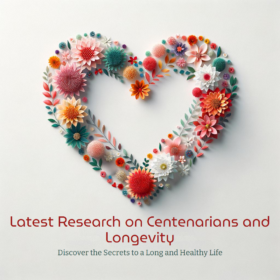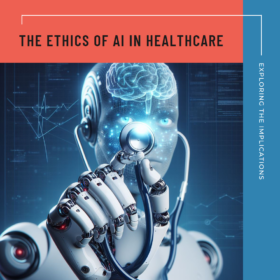Healthcare has come a long way in the past few decades, with advancements in technology and medicine helping to improve overall health outcomes for patients. However, there are still barriers that prevent many individuals from accessing high-quality healthcare. As we enter the era of Medicine 3.0, there is promise for breaking down these barriers and providing more equitable access to healthcare for all.
Medicine 3.0 is the next phase in the evolution of healthcare, building on the foundation of Medicine 2.0 which focused on the digitization of healthcare and the use of electronic health records. Medicine 3.0 takes this a step further, leveraging new technologies such as artificial intelligence, machine learning, and big data analytics to transform the way healthcare is delivered.
One of the biggest barriers to healthcare access is the high cost of medical treatment. Medicine 3.0 promises to address this issue by making healthcare more personalized and preventive, enabling earlier detection and intervention which can ultimately reduce the overall cost of care. For example, by using AI to analyze large datasets of patient information, healthcare providers can identify patterns and trends that can help predict and prevent certain diseases, ultimately reducing the need for expensive treatments.
Another barrier to healthcare access is the shortage of healthcare professionals, particularly in rural and underserved areas. Medicine 3.0 aims to address this through telemedicine and remote monitoring technologies, which enable patients to receive care from specialists located in other areas. This can help to bridge the gap between patients and healthcare providers, ensuring that everyone has access to the expertise they need.
Furthermore, disparities in healthcare outcomes among different demographic groups remain a persistent issue. Medicine 3.0 has the potential to address these disparities by enabling more personalized and targeted treatments. For example, by analyzing genetic data and other factors, healthcare providers can tailor treatments to the individual characteristics of each patient, ultimately leading to better outcomes for all.
Finally, the adoption of new technologies in healthcare has the potential to improve efficiency and streamline the delivery of care, reducing waiting times and improving the overall patient experience. This can help to make healthcare more accessible and convenient for all individuals, regardless of their location or socio-economic status.
In conclusion, Medicine 3.0 represents a promising new frontier in healthcare, with the potential to break down longstanding barriers and improve access to high-quality care for all individuals. By leveraging new technologies and innovative approaches, Medicine 3.0 has the potential to transform the healthcare landscape and create a more equitable and inclusive healthcare system for the future. As we continue to embrace these advancements, it is essential to ensure that they are applied in a way that benefits all individuals, and that no one is left behind in the pursuit of better health for all.
- Home
- About
- Blog
- Health Tips
- Ultimate Guide to Longevity: Expert Tips, Science, and Inspiring Stories
- Biohacking 101: Essential Beginner’s Guide for 2024 – Optimize Health & Wellness
- Modern Wellness: Biohacking, AI Medicine & Medicine 3.0 | Cutting-Edge Health Trends
- July 2024 Bio-Hacking & Longevity Breakthroughs: Latest Tech Advancements
- Resources
- Community
- Ben Greenfield – The Ultimate Resource Guide
- Dave Asprey – The Father of Biohacking
- Dr. Andrew Huberman – Pioneering Neuroscience Research
- 🔬 Dr. David Sinclair: Pioneer in Anti-Aging and Longevity Science 🧬
- Dr. Steven Gundry, MD: The Pioneer in Holistic Health and Wellness
- Max Lugavere: Health and Science Journalist,
- NAMI, the National Alliance on Mental Illness
- Connect with Us
- Home
- About
- Blog
- Health Tips
- Ultimate Guide to Longevity: Expert Tips, Science, and Inspiring Stories
- Biohacking 101: Essential Beginner’s Guide for 2024 – Optimize Health & Wellness
- Modern Wellness: Biohacking, AI Medicine & Medicine 3.0 | Cutting-Edge Health Trends
- July 2024 Bio-Hacking & Longevity Breakthroughs: Latest Tech Advancements
- Resources
- Community
- Ben Greenfield – The Ultimate Resource Guide
- Dave Asprey – The Father of Biohacking
- Dr. Andrew Huberman – Pioneering Neuroscience Research
- 🔬 Dr. David Sinclair: Pioneer in Anti-Aging and Longevity Science 🧬
- Dr. Steven Gundry, MD: The Pioneer in Holistic Health and Wellness
- Max Lugavere: Health and Science Journalist,
- NAMI, the National Alliance on Mental Illness
- Connect with Us
- Home
- About
- Blog
- Health Tips
- Ultimate Guide to Longevity: Expert Tips, Science, and Inspiring Stories
- Biohacking 101: Essential Beginner’s Guide for 2024 – Optimize Health & Wellness
- Modern Wellness: Biohacking, AI Medicine & Medicine 3.0 | Cutting-Edge Health Trends
- July 2024 Bio-Hacking & Longevity Breakthroughs: Latest Tech Advancements
- Resources
- Community
- Ben Greenfield – The Ultimate Resource Guide
- Dave Asprey – The Father of Biohacking
- Dr. Andrew Huberman – Pioneering Neuroscience Research
- 🔬 Dr. David Sinclair: Pioneer in Anti-Aging and Longevity Science 🧬
- Dr. Steven Gundry, MD: The Pioneer in Holistic Health and Wellness
- Max Lugavere: Health and Science Journalist,
- NAMI, the National Alliance on Mental Illness
- Connect with Us
Top Insights
Home
Breaking Barriers in Healthcare: The Promise of Medicine 3.0
Breaking Barriers in Healthcare: The Promise of Medicine 3.0
Recent Posts
Categories
- Anti-Aging35
- Beauty2
- Ben Greenfield Corner214
- Biohacking45
- Books2
- BulletProof13
- ChatGPT Insights51
- Dr. David Sinclair2
- Dr. Gundry MD1
- Emotional Balance72
- Health19
- Her Health Hub1
- Huberman Labs Highlights66
- Human Potential Newsfeed316
- Insights7
- Intellectual Expansion75
- Lifestyle13
- Longevity18
- Max Lugavere19
- Mindset71
- Modern Wellness12
- Neuroscience74
- Nutritional Insights309
- Physical Wellness27
- Recipes117
- Self-care72
- Social Well-being13
- Supplements4
Related Articles
Nutritional InsightsRecipes
The Perfect Gluten-Free Vegan Waffles
Upgrade your brunch game with these dreamy waffles from the Dreena’s Kind...
ByYoung By ChoiceJuly 26, 2024
HealthNeuroscience
Outsmart Your Smartphone: Swap Googling for Napping to Enhance Brain Health
In an age where Googling seems second nature, consider this: swapping screen...
ByYoung By ChoiceJuly 26, 2024
Her Health Hub
6 home remedies to get rid of acne on legs
Acne on the legs is a more common skin condition than you...
ByYoung By ChoiceJuly 26, 2024
Neuroscience
New Research Indicates That How Often You Poop Could Predict Your Health – Are You in the “Goldilocks Zone”?
New research suggests that the frequency of your bowel movements might reveal...
ByYoung By ChoiceJuly 26, 2024













